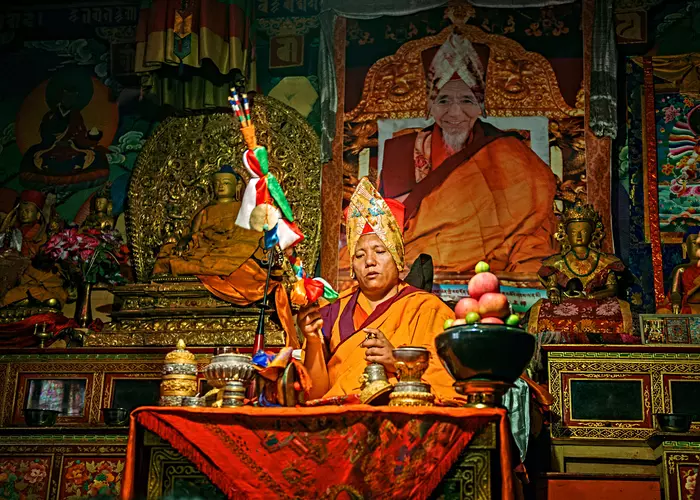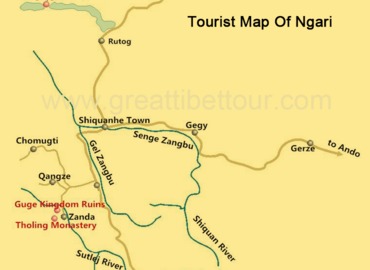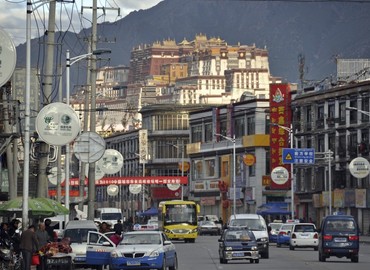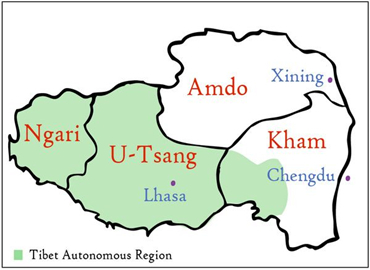Tibet History
- Nance
- Last Updated : 05/21/2025
Tibet, known as the rooftop of the world or the snow land, encompasses vast stretches of lofty plateaus and towering mountains. The world’s highest and largest plateau - the Tibetan plateau has an area of 2,500,000 square kilometers and an elevation exceeding 4,900 meters. The world’s highest mountain, Mount Everest, is located in the same region. It's tens of thousands of glaciers that serve as a “water tower,” storing water and maintaining flow.
The history of Tibet can be traced back to 4,000 to 5,000 years ago when snow dominated the land, while life was budding and stone contraptions were dominating the household. The legends have it that Tibetan people originated from the union of a monkey and a female demon.
Imperial Age (602-842)
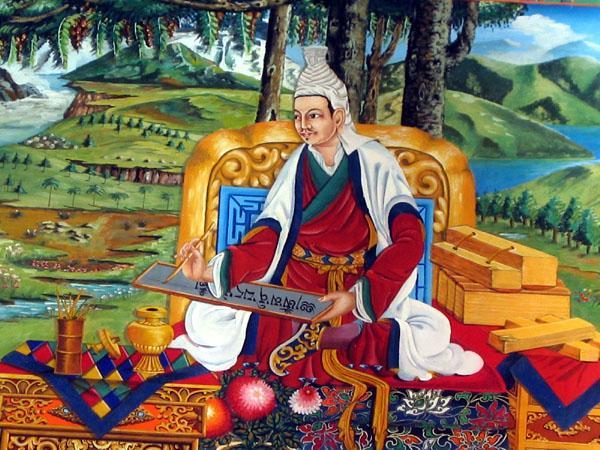
It was not until the 7th century that the people living in Tibet were referred to as a race with the emergence of the Tibetan empire. The first powerful dynasty that emerged in this region was the YARLUNG DYNASTY. This kingdom also known as the TUBO KINGDOM was founded by the most intelligent and zealous king SONGTSEN GAMPO (604-650). He married Princess Wencheng from the Tang dynasty. Princess Wencheng brought advanced technology, Han culture and customs, and most importantly - BUDDHISM. So two religions started to be practiced in the snowy land. One was indigenous BON and the other BUDDHISM. After many years, Tibetan Buddhism became the state religion. This empire exercised a powerful influence in central Asia. The Yarlung dynasty saw its peak in 780 and 790 when it controlled a territory stretching from modern-day Afghanistan, Bangladesh, Bhutan, Burma, China, India, Nepal, Pakistan, Kazakhstan, Kyrgyzstan, and Tajikistan. The imperial age came to an end with the assassination of KING LANGDARMA, followers of the Bon religion in 842. With the fall of this dynasty, Tibet soon divided into various territories.
At the same time, there is a highly developed civilization in NorthwestTibet - Zhangzhung. Zhangzhung means land where the roc (an enormous legendary bird of prey) lives. In Chinese history, Zhangzhung was recorded as 羊同 (pinyin: yang tong). Zhangzhung is the earliest civilization centered on the Tibetan Plateau. According to historical records, the Zhangzhung regime had risen on the Tibetan plateau in the 10th century BC, and established its relationship with the Tang Dynasty earlier than the Tubo. In the 6th and 7th centuries AD, Zhangzhung was already dominated by animal husbandry and agriculture. The ancient Zhangzhung had produced a very high civilization. It not only formed its own unique Zhangzhung script but also was the birthplace of the traditional Tibetan indigenous religion, the Bon Religion, which exerted a profound influence on the subsequent Tubo culture as well as the whole Tibetan culture. At the height of its power, the Zhangzhung kingdom had strong military power and vast territory. Later, the Tubo regime gradually rose up in the Tibetan plateau, and by the 8th century AD, it completely replaced Zhangzhung. From then on, the Zhangzhung kingdom and culture suddenly disappeared.
Era of Fragmentation
From the 9th to the 13th century, the political control over Tibet was divided. There was no central governing authority. Islam set foot in the land in 1206 through an invasion from Bengal. The downfall of the Yarlung dynasty left Tibet in a power vacuum with Buddhists having a dominant role in society and the indigenous Bon shrunk in the background.
Sakya Rule
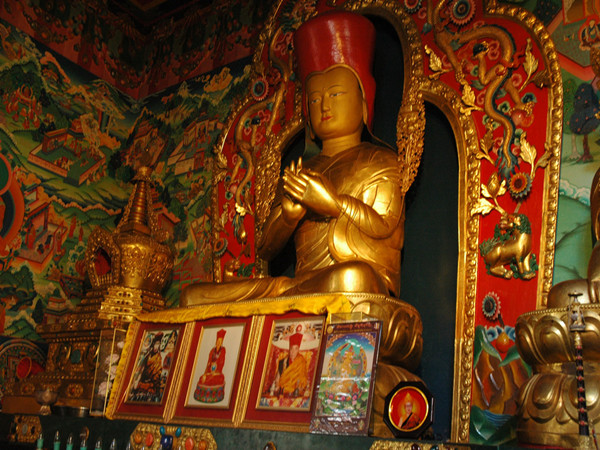
After the fall of the Tupo Regime, there are 400 years of division and wars in Tibet. At the beginning of the 13th century, Genghis Khan unified China. Later, his grandson called Godan Khan, unified Tibet with the help of the local religious power. In 1247, Godan Khan learned that the Sakya sect was the most powerful sect in Tibet, so he decided to appoint Sakya Pandita and his two nephews served as delegates of Tibet's political leadership. In addition, Sakya Pandita was encouraged by Godan to invent a Mongolian script called 'Phags-pa script.
In the year of 1260, Khubli Khan became Emperor of the Yuan dynasty. He not only granted Basiba the position of spiritual leader but also presented him with a jade seal. From that time, Basiba took charge of national Buddhism affairs and the administrative affairs of Tibet. In the year of 1265, Basiba enlarged Sakya Monastery. In order to administer the local affairs in Tibet, he also established the Sakya kingdom. From there on, Tibet became associated with the Chinese empire but retained its autonomy. The Buddhist monks, however, enjoyed influence in Mongolian courts. The Mongols set up the Yuan Dynasty with Sakya acting as the political authority and the Mongols holding administrative and military control.
Pazhu Regime
When the Yuan Dynasty declined, the Pazhu Regime appeared and replaced the Sakya Regime. In the 12th Century, Dogyi Gyepu set up Pazhu Regime. It was just a little regime at that time. Pazhu Regime became a popular local authority when it was led by Yunqin Gyewa Gyabao. In 1354, Gyangqiu Gyanzam occupied Sakya Monastery and replaced the Sakya authorities. Emperor Shun of the Yuan Dynasty bestowed an official seal that authorized him to govern Tibet.
At that time, due to the lack of religious discipline and the corruption of monks, Buddhist sects lost their support from the people. Tsongkhapa, who advocated religious reform, gained great support from the Pazhu Government. In the Pazhu Regime, there were twelve generations of Kings who ruled Tibet for 264 years from 1354 to 1618.
Collapse of Serfdom
The Ming dynasty of China came to power after thwarting the attack of the Dzungar Mongols on China. Tibet at that time was unstable, so it was made an autonomous state by the Ming rulers with military and administrative powers in their hands. Dalai Lama was restored as the ruler.
Sino-Sikh war broke in 1834 over Sikh’s annexation of Ladakh. The war ended with a treaty of Chushul between both the parties. During the mid 19th century the control of the Qing Dynasty declined over China. Subsequently, its authority over Tibet also became minimal.
In the early 20th century, Russia wanted control over Tibet as a part of its plan to expand in Central Asia. Tibet became the strategic point. At the same time, the British were also extending their influence over north India and considered Tibet as a critical region to maintain their superiority in the sub-continent region.
The British expeditions preferred negotiations with the 13th Dali Lama to Chinese representatives to gain influence over the snow land. The British invasion of 1903 resulted in hundreds of Tibetans' fatalities. In 1908, the 13th Dali Lama went to Beijing where Emperor Guangxu met him and his title as Dalai Lama was officially approved.
In 1910, the Qing government united Tibet and established direct Chinese rule. Dalai Lama fled to British-India. However, the Qing rule in Tibet was highly unpopular.
The Qing rule was ended by XINHAI REVOLUTION who founded the Republic of China. In 1940, the government of the Republic of China wanted to restore Dalai Lama, apologizing for the actions of the Qing Government. So the government hosted the bed-sitting ceremony for the 14th Dalai, Danzengjiacuo.
Establishment of Tibet Autonomous Region
In 1949, the People’s Republic of China was founded. In 1951, Tibet was liberated peacefully by the government. The feudal serfdom in Tibet was abolished. In September 1965, Tibet Autonomous Region was established.
Email response within 0.5~24 hours.


